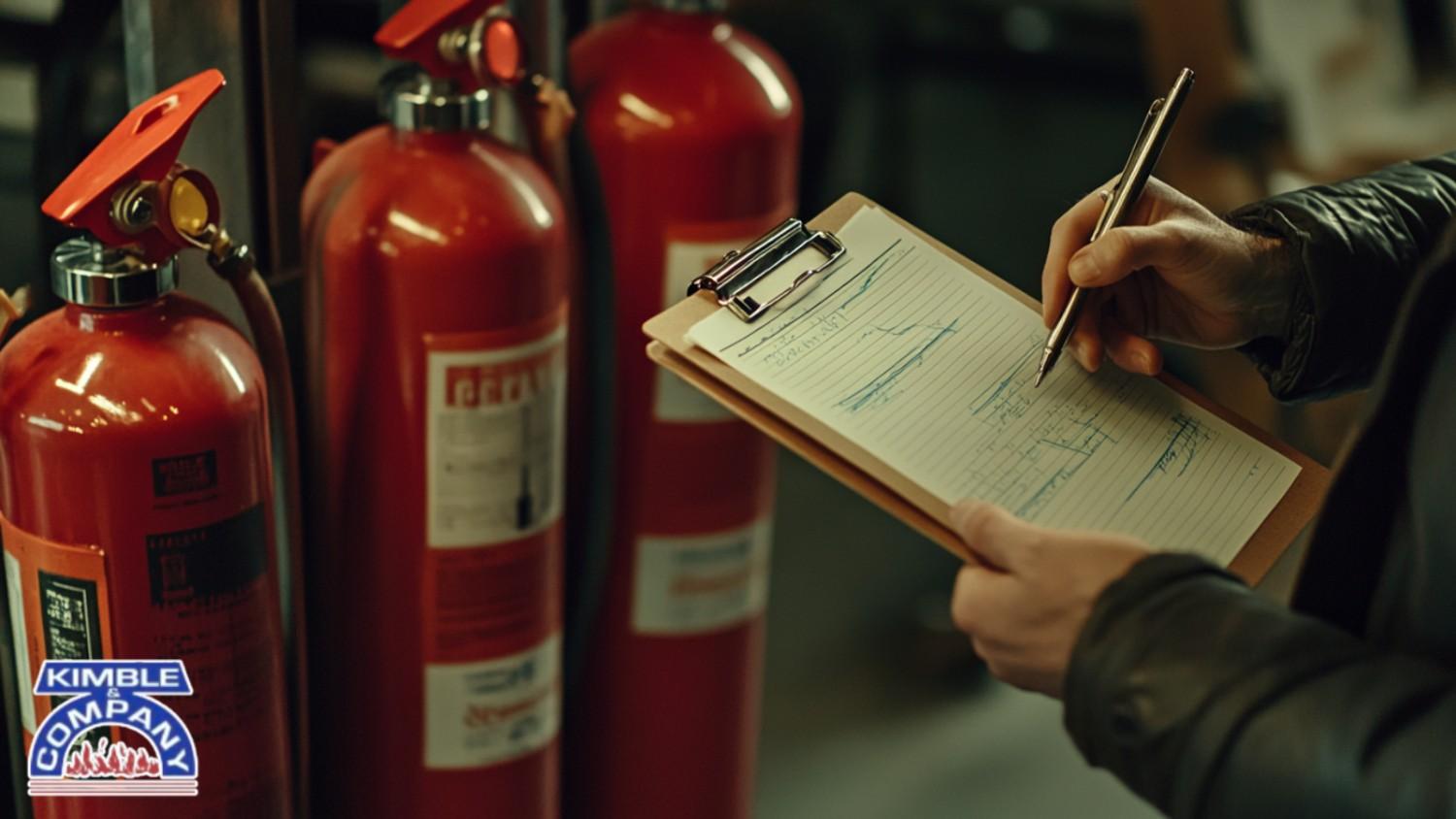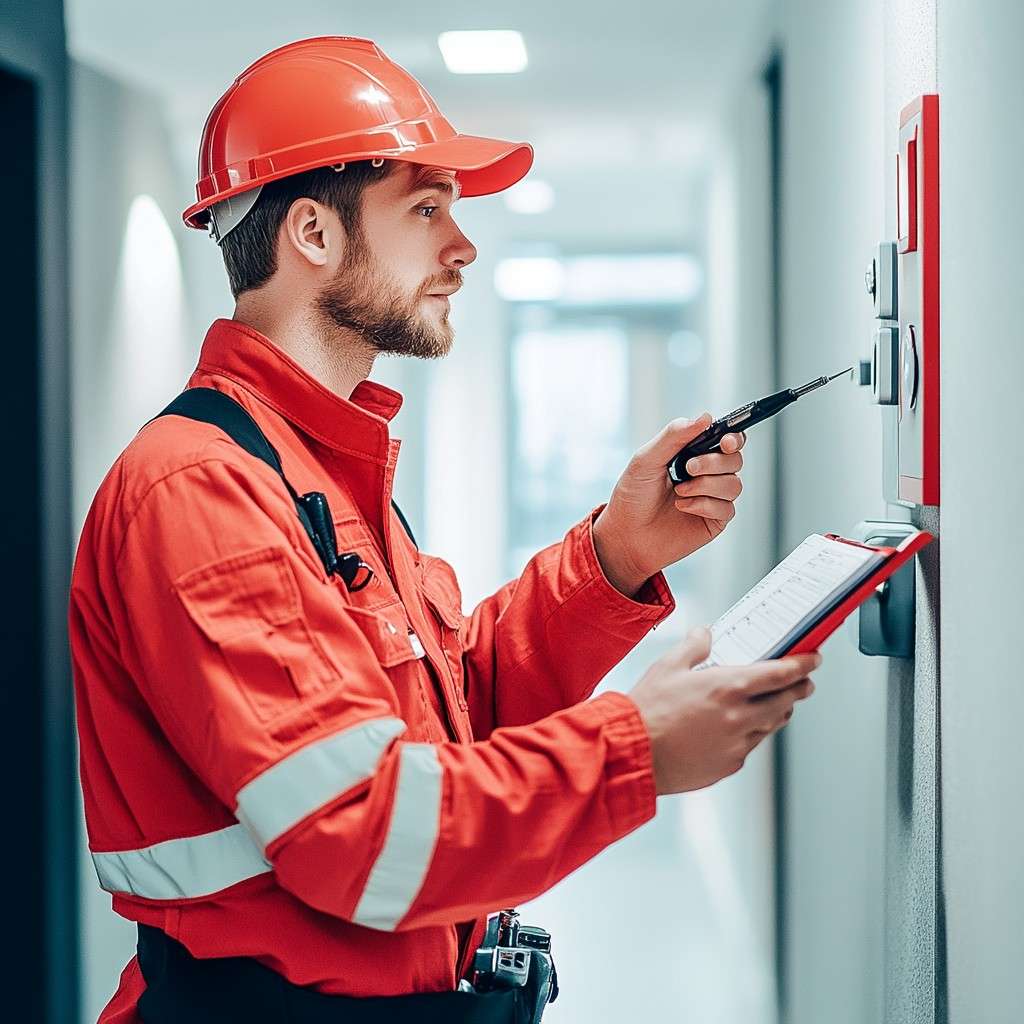Ensuring compliance with fire alarm and fire extinguisher systems is an essential responsibility for property owners and managers. It protects lives, reduces liability, and ensures smooth operations while adhering to local and national safety regulations. This comprehensive guide will walk you through compliance requirements, actionable steps, and the importance of working with certified experts in the field.
Whether it’s a routine fire alarm system inspection or a thorough review of your extinguishers by a qualified fire extinguisher inspector, following these practices will help safeguard your property and occupants while avoiding potential risks and penalties.
Understanding Fire Safety Compliance
Compliance with fire safety systems involves meeting specific regulations and standards that ensure the systems are functional and practical in emergencies. Failure to maintain compliance can lead to severe consequences, including legal penalties, business interruptions, and increased risks to occupants.
Key Regulatory Frameworks
Fire safety compliance is governed by a combination of national standards and local fire codes, each designed to address specific aspects of fire prevention and protection:
- NFPA 72: This standard focuses on designing, testing, and maintaining fire alarm systems. It mandates regular inspections to ensure alarms warn occupants and emergency responders early. Components such as smoke detectors, notification devices, and control panels must be operational and compliant.
- NFPA 10: This standard provides comprehensive requirements for portable fire extinguishers, including installation locations, inspection schedules, and maintenance procedures. It ensures extinguishers are functional, accessible, and appropriate for the types of fire risks present.
- Local Fire Codes: Jurisdictions may have unique fire codes that build on NFPA standards. These regional regulations address specific hazards or environmental factors, requiring additional safety measures to protect the local population and infrastructure.
Compliance with these frameworks is essential to ensuring the safety of occupants, avoiding penalties, and maintaining insurance coverage. Property owners should stay informed about updates to these codes and work with experienced fire protection contractors to remain compliant.
Why Fire Safety Compliance Matters
Fire safety compliance is more than a legal obligation—it’s a vital investment in safeguarding lives, assets, and business continuity. A compliant system can differentiate between a contained fire and catastrophic loss.
Protecting Lives and Property
Functional fire safety systems are the cornerstone of life safety and asset protection. Their benefits include:
- Early Detection: A properly maintained fire alarm system provides immediate warnings, giving occupants critical time to evacuate safely. Advanced systems can also notify emergency services directly, reducing response times.
- Fire Suppression: Portable extinguishers and sprinkler systems prevent fires from spreading. When maintained to NFPA standards, these systems can limit damage to specific areas, protecting the property’s structural integrity.
- Peace of Mind: Compliance reassures tenants, employees, and visitors that the building is equipped to handle emergencies. A well-maintained system demonstrates a commitment to their safety, fostering trust and confidence.
Whether a small office or a multi-story commercial building, compliance ensures that fire protection systems are reliable and ready when needed.
The Path to Compliance
Achieving fire safety compliance requires a proactive approach and collaboration with qualified professionals. Here’s how to ensure your systems meet regulatory standards:
Step 1: Schedule Regular Inspections
Routine inspections are the foundation of fire safety compliance. Certified fire protection contractors should inspect fire alarm and extinguisher systems periodically.
Fire Alarm Inspections
- Inspect components such as control panels, detectors, and notification devices.
- Test the system’s functionality, including smoke and heat detection, alarms, and emergency notifications.
- Ensure alignment with NFPA 72 guidelines for fire alarm system inspections.
Fire Extinguisher Inspections
- Check extinguisher placement, accessibility, and pressure levels.
- Verify tamper seals and inspect for visible damage or wear.
- Conduct hydrostatic testing every 5-12 years, as mandated by NFPA 10.
Step 2: Conduct Comprehensive Risk Assessments
Conducting a thorough risk assessment is critical to identifying potential vulnerabilities that could compromise fire safety in your property. This step ensures that every fire prevention and safety aspect is evaluated and addressed proactively. Key areas to focus on include:
- Evaluating Fire Risks
Begin by thoroughly inspecting all wiring throughout the building, paying particular attention to signs of wear, fraying, or overloading, as these are common causes of electrical fires. Additionally, assess areas where flammable materials are stored, ensuring they are kept in fire-resistant containers or cabinets to minimize the risk of ignition. It’s also important to review your storage practices; overcrowding or obstructing access to fire protection systems can impede effective emergency responses, so make sure that all areas remain clear and accessible. - Inspecting Escape Routes
Escape routes should be meticulously checked to ensure they are clearly marked, unobstructed, and compliant with local fire codes. Emergency exit doors must be tested regularly to verify that they open easily and are not locked or blocked, ensuring swift evacuation during an emergency. Furthermore, illuminated signage should be installed to guide occupants toward exits, especially during low visibility situations or power outages, to ensure a safe and efficient evacuation process. - Updating Equipment
As part of a comprehensive risk assessment, it’s crucial to replace outdated fire alarms with modern systems that offer enhanced features, such as remote monitoring or integration with sprinkler systems, to ensure faster response times in the event of an emergency. Similarly, upgrading to fire extinguishers that meet current NFPA standards for your building type and risks is essential to maintaining effective fire safety. To further improve safety, consider adding specialized equipment, such as smoke ventilation systems or flame detectors, which can provide additional layers of protection for both people and property.
A comprehensive risk assessment enables property owners to identify potential vulnerabilities and implement targeted improvements, significantly reducing the likelihood of preventable fire incidents.
Step 3: Implement Preventative Maintenance Plans
Establishing a preventative maintenance plan is essential for ensuring that fire protection systems remain fully operational and compliant with regulations. Proactive maintenance minimizes system failures and enhances overall safety. Key components of a robust maintenance plan include:
- Preventative Maintenance Plans
Proper maintenance ensures fire protection systems remain compliant and reliable. Monthly inspections should check for visible issues like leaks, corrosion, or blockages in fire extinguishers, sprinkler heads, and alarms. Ensure control panels function properly, and fire extinguishers are accessible, mounted securely, and tamper-sealed. Annual servicing verifies system functionality through comprehensive testing. This includes fire alarm sensor accuracy, extinguisher pressure levels, and sprinkler water flow and pressure compliance with NFPA 25 standards. Maintain detailed records of all inspections to demonstrate compliance and support audits.
- Comprehensive Risk Assessments
Risk assessments identify vulnerabilities and strengthen fire safety. Inspect wiring for wear or overloading, and ensure flammable materials are stored securely in fire-resistant containers. Keep pathways to fire protection systems clear and unobstructed. Ensure escape routes are clearly marked and compliant with fire codes. Regularly test emergency exits to verify they open easily and are free from obstructions. Add illuminated signage for safe evacuation in low-visibility conditions. Consider additional safety enhancements like smoke ventilation systems or flame detectors.
By addressing these risks proactively, property owners can reduce fire incidents and ensure systems are ready when needed.
The Role of Fire Protection Professionals
Certified fire protection services simplify compliance and ensure that systems are installed, inspected, and maintained to meet stringent safety codes.
Staying Ahead of Code Updates
Fire safety regulations evolve to address new risks and advancements in technology. Staying informed about these changes is critical:
- NFPA Updates: The NFPA regularly revises its standards to improve fire safety, Collaborates with fire protection professionals to stay updated on these changes, and implements necessary adjustments.
- Local Amendments: Jurisdictions may introduce new fire codes or modify existing ones. Ensure your systems comply with these regional requirements to avoid penalties.
Taking proactive steps today means avoiding fines, minimizing risks, and fostering a safe environment for everyone. Trust experienced fire protection contractors to guide you through the compliance process with expertise and efficiency.
Consequences of Non-Compliance
The risks of failing to maintain compliant fire safety systems are significant and far-reaching.
Financial Penalties
Non-compliance with fire safety regulations can lead to substantial financial penalties, which can strain your business operations and budget. Regulatory authorities often issue fines that reflect the severity of the violation, and these penalties can escalate if issues are not addressed promptly. For small and medium-sized businesses, these fines may represent a significant financial burden, diverting resources from core operations or future growth initiatives.
Reputational Damage
A fire incident linked to non-compliant systems can severely harm your business’s reputation. For property managers, this could mean losing the trust of tenants who no longer feel safe.
For businesses, customers may be deterred from patronizing establishments with a record of safety lapses. The ripple effects of reputational damage can extend to partnerships, investments, and employee morale. In today’s age of instant online reviews and social media exposure, even a single incident can tarnish your credibility for years.
Increased Liability
Non-compliance significantly increases the risk of legal claims and lawsuits, particularly if injuries, fatalities, or extensive property damage occur during a fire. Courts tend to take a harsh view of businesses that neglect regulatory requirements, often awarding substantial settlements or damages to victims.
Final Thoughts: Take Action Today
Maintaining compliance with fire alarm and extinguisher systems is a proactive investment in safety, legal protection, and operational continuity. By partnering with a trusted fire protection company, you can navigate complex regulations and ensure your systems are always ready to perform in emergencies.
Contact Kimble & Company Fire Protection Services today for professional assistance with fire alarm and extinguisher compliance. We’ll help you protect what matters most, from inspections to complete system maintenance.



